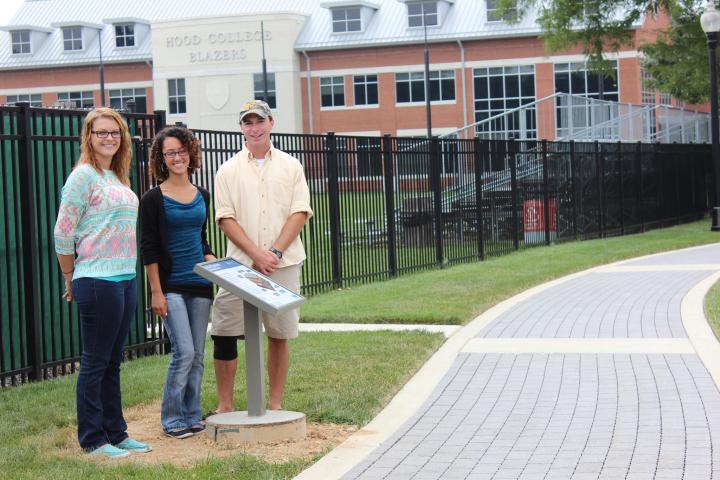
Clean Water and Sanitation
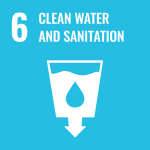 Goal 6: Ensure availability and sustainable management of water and sanitation for all. 1
Goal 6: Ensure availability and sustainable management of water and sanitation for all. 1
The UN has identified 8 Targets under this Goal:
Target 6.3 IMPROVE WATER QUALITY, WASTEWATER TREATMENT AND SAFE REUSE
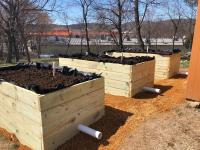 Rain water discharged from rooftops is largely untreated wastewater inaccessible for productive use. With appropriate monitoring and treatment, communities can recycle this water source for safe reuse.
Rain water discharged from rooftops is largely untreated wastewater inaccessible for productive use. With appropriate monitoring and treatment, communities can recycle this water source for safe reuse.
Hood College's Center for Coastal and Watershed Studies (Hood-CCWS) has developed and tested vegetable rain gardens on our campus and in our community that collect rooftop runoff and use it in the subsurface irrigation of raised bed gardens to grow healthy fresh vegetables.
Target 6.6 PROTECT AND RESTORE WATER-RELATED ECOSYSTEMS including mountains, forests, wetlands, rivers, aquifers and lakes.
Hood College implemented several low-impact designs on campus to help reduce the temperature and pollutants from stormwater runoff to protect our local freshwater ecosystems. These examples of "green infrastructure" help slow down the speed of runoff from impervious surfaces, allowing the water to soak into the soil, cooling it down and removing sediments and nutrients in the process. Examples include:
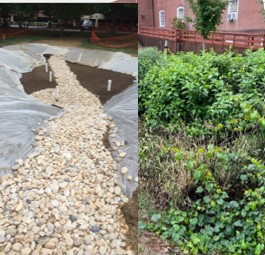 -Rain Gardens capture rainwater feature in landscaping that helps slow and absorb runoff from storms. Rain gardens recreate the natural function of the land, which includes; capturing rainwater, filtering out pollutants, and recharging groundwater. Numerous planted bioretention areas are found throughout the campus from behind Whitaker Center to in front of the Athletic Center. One of the larger rain gardens is located near Coffman Chapel, planted with beautiful grass and flowering plant species that benefit pollinating insects.
-Rain Gardens capture rainwater feature in landscaping that helps slow and absorb runoff from storms. Rain gardens recreate the natural function of the land, which includes; capturing rainwater, filtering out pollutants, and recharging groundwater. Numerous planted bioretention areas are found throughout the campus from behind Whitaker Center to in front of the Athletic Center. One of the larger rain gardens is located near Coffman Chapel, planted with beautiful grass and flowering plant species that benefit pollinating insects.
 -Filterra Bioretention Storm Drains directs runoff from the street via the curb into a concrete container filled with special filter media mixture and trees or plants. Pollutants captured from the stormwater in the filter media decompose, volatilize, and are utilized by the system's trees and/or plants. Stormwater runoff flows through the media and into an underdrain system at the bottom of the container, where the treated water is discharged.
-Filterra Bioretention Storm Drains directs runoff from the street via the curb into a concrete container filled with special filter media mixture and trees or plants. Pollutants captured from the stormwater in the filter media decompose, volatilize, and are utilized by the system's trees and/or plants. Stormwater runoff flows through the media and into an underdrain system at the bottom of the container, where the treated water is discharged.
A Filterra bioretention area can be found in front of the Hodson Science and Technology Building, along Hodson Drive.
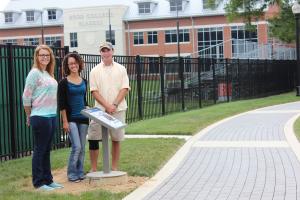 -Permeable Pavers are one example of stormwater best management practices designed to mimic nature allowing water to permeate the ground and filter through the soil. In doing so, the surrounding vegetation root system is able to absorb water and synthesize much of the oil and chemicals that run off our streets. In 2016, a section of permeable pavers were installed as a sidewalk between Blazer Trail and the Athletic field. Interpretative signage is also found along this walkway to inform pedestrians of the benefits of permeable pavers.
-Permeable Pavers are one example of stormwater best management practices designed to mimic nature allowing water to permeate the ground and filter through the soil. In doing so, the surrounding vegetation root system is able to absorb water and synthesize much of the oil and chemicals that run off our streets. In 2016, a section of permeable pavers were installed as a sidewalk between Blazer Trail and the Athletic field. Interpretative signage is also found along this walkway to inform pedestrians of the benefits of permeable pavers.
Target 6.8 SUPPORT AND STRENGTEHN THE PARTICIPATION OF LOCAL COMMUNITIES in improving water and sanitation management
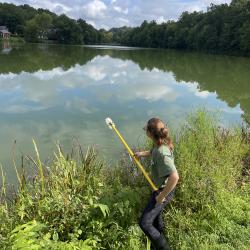 Hood-CCWS has partnered with local community groups to monitor local waterways for the presence of harmful bacteria and algae that can negatively impact ecosystem function and public health and alert community managers when issues arise. By keeping communities aware of potential water-borne diseases, we help water managers to predictively model the occurrence of indicator bacteria on a daily basis throughout the summer months.
Hood-CCWS has partnered with local community groups to monitor local waterways for the presence of harmful bacteria and algae that can negatively impact ecosystem function and public health and alert community managers when issues arise. By keeping communities aware of potential water-borne diseases, we help water managers to predictively model the occurrence of indicator bacteria on a daily basis throughout the summer months.
Additional water quality projects completed withing the community can be found at Hood-CCWS website.
1. UN Sustainablity Goals website: https://www.globalgoals.org/goals/6-clean-water-and-sanitation/
Are you ready to say Hello?
Choose a Pathway
Information will vary based on program level. Select a path to find the information you're looking for!
